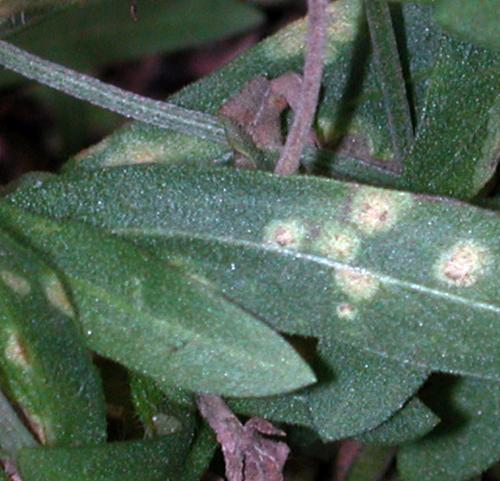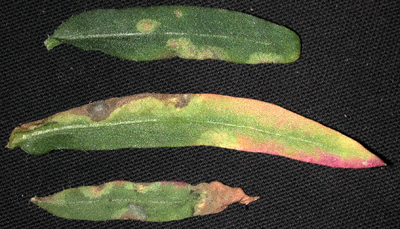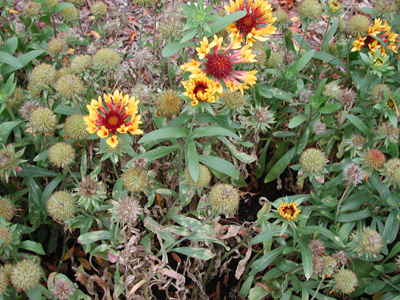White smut
July 8, 2015
Rusts and smuts
Pathogen
Entyloma polysporum.
Hosts
Aster, Echinacea, Gaillardia, Helianthus and Rudbeckia.
Symptoms
Round, white spots, up to 1 centimeter in diameter. Young lesions may create very faint spots. Over time, the spots turn brown and become necrotic.

Whitish, round lesions on Gaillardia foliage.
Spread
Spores are formed inside the leaf tissue. As lesions mature, the leaf surface ruptures, releasing the spores.

Older lesions caused by white smut on Gaillardia have coalesced and are causing necrosis.
Spores are wind-dispersed. A white, powdery material may be visible on the leaf surface. Spores of this fungus are not known to survive winters in the northern United States.
Management
Remove all symptomatic plants. Plants in greenhouses may need fungicide applications for good disease control. The disease is favored by cool, humid conditions; disease spread will be slow under warm, dry conditions.
Note
Of the hosts listed, Gaillardia is most susceptible. The disease has been documented on the cultivars ‘Goblin’, ‘Baby Cole’ and ‘Fanfare.’ This disease has been seen with increasing frequency in the past few years.

Dieback caused by a severe white smut infestation on a landscape planting of Gaillardia.
Print a PDF of this page: White smut



 Print
Print Email
Email


